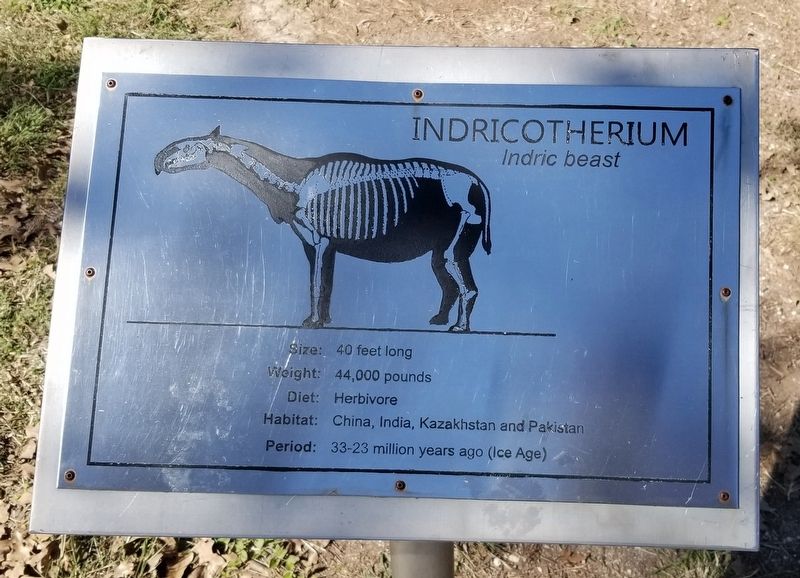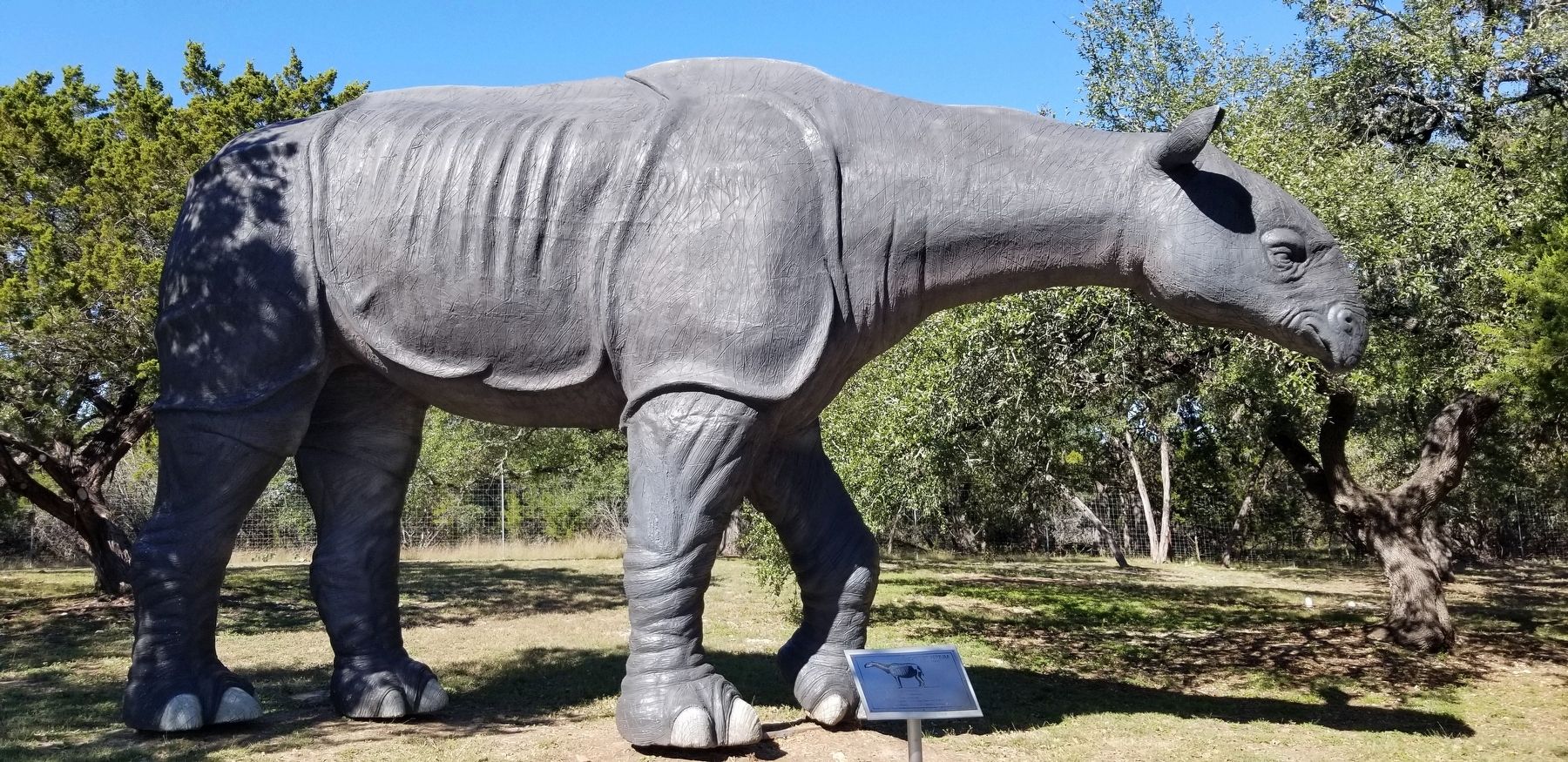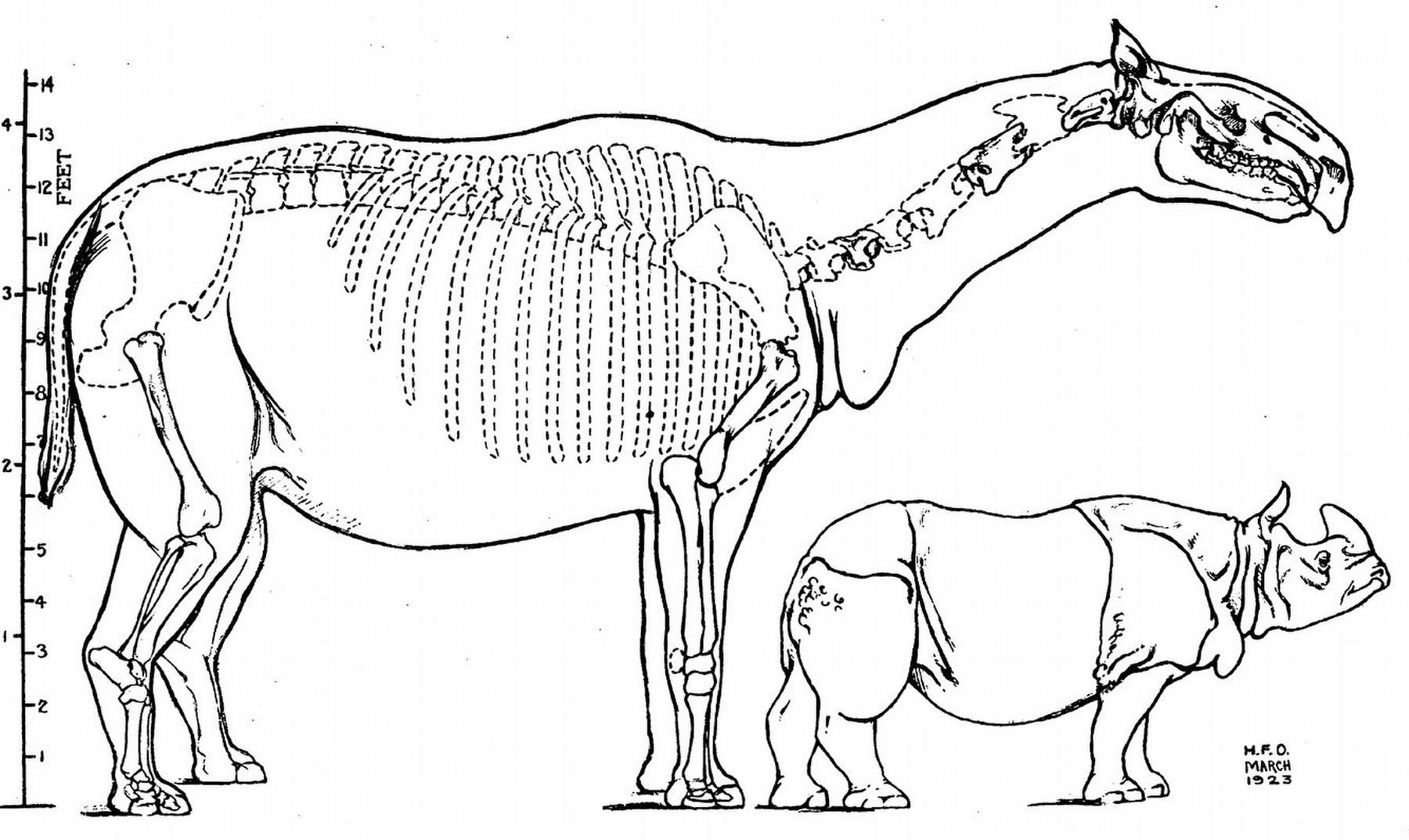Bandera in Bandera County, Texas — The American South (West South Central)
Indricotherium
Indric Beast
Size: 40 feet long
Weight: 44,000 pounds
Diet: Herbivore
Habitat: China, India, Kazakhstan and Pakistan
Period: 33-23 million years ago (Ice Age)
Erected by Bandera Natural History Museum.
Topics. This historical marker is listed in these topic lists: Animals • Paleontology.
Location. 29° 43.874′ N, 99° 4.081′ W. Marker is in Bandera, Texas, in Bandera County. Marker can be reached from Old San Antonio Road, 0.1 miles north of State Highway 16. The marker is located on the grounds of the Bandera Natural History Museum. Touch for map. Marker is at or near this postal address: 267 Old San Antonio Road, Bandera TX 78003, United States of America. Touch for directions.
Other nearby markers. At least 8 other markers are within walking distance of this marker. Pachycephalosaurus (a few steps from this marker); Gastornis (within shouting distance of this marker); Deinonychus (within shouting distance of this marker); Dilophosaurus (within shouting distance of this marker); Mastodon (within shouting distance of this marker); Stegosaurus (within shouting distance of this marker); Smilodon (within shouting distance of this marker); Torosaurus (within shouting distance of this marker). Touch for a list and map of all markers in Bandera.
Regarding Indricotherium. There is a entrance fee to visit the Bandera Natural History Museum which allows you to walk through the dinosaur exhibits and markers.
Also see . . . Near horn beast - Paraceratherium.
Paraceratherium is an extinct genus of hornless rhinoceros. It is one of the largest terrestrial mammals that has existed and lived from the early to late Oligocene epoch (34–23 million years ago). The first fossils were discovered in what is now Pakistan, and remains have been found across Eurasia between China and the Balkans. It is classified as a member of the hyracodont subfamily Indricotheriinae. Paraceratherium means "near the hornless beast", in reference to Aceratherium, the genus in which the type species P. bugtiense was originally placed. Source: Wikipedia(Submitted on January 3, 2022, by James Hulse of Medina, Texas.)
Credits. This page was last revised on January 3, 2022. It was originally submitted on January 3, 2022, by James Hulse of Medina, Texas. This page has been viewed 395 times since then and 26 times this year. Photos: 1, 2, 3. submitted on January 3, 2022, by James Hulse of Medina, Texas.


